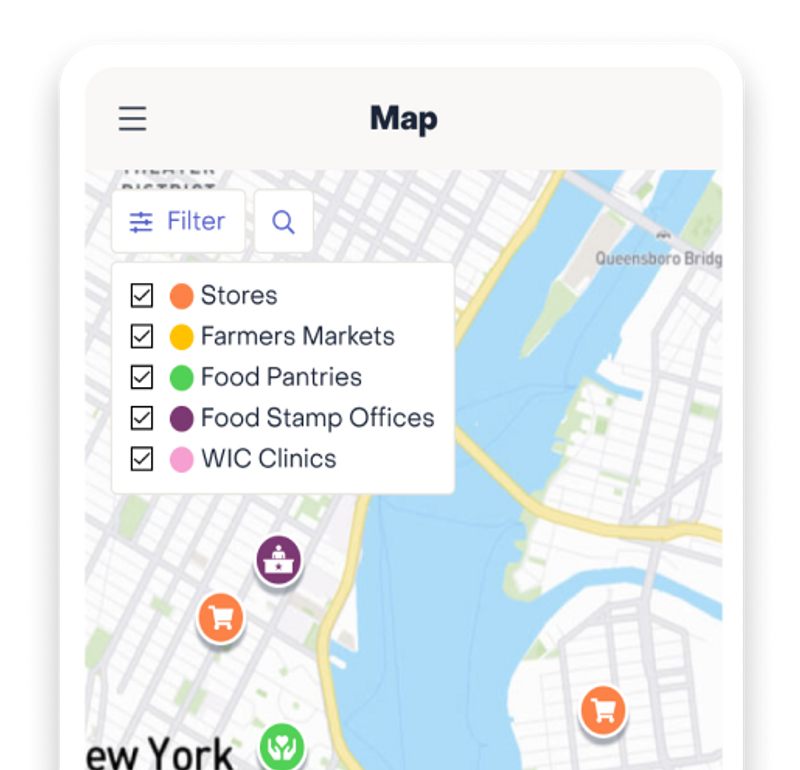Keeping track of all the EBT information out there can be overwhelming. So, we’ve broken down all the basics in one handy guide.
If you have a question that we haven’t answered here, let us know.
The Hoosier Works Card is Indiana’s EBT card.
EBT = electronic benefits transfer.
EBT card = a card that looks and works like a debit or credit card but is loaded with food stamps and/or cash benefits. You can use it at stores that accept EBT. EBT cards are mailed to clients upon initial approval of benefits, and the card is good for life. If an individual goes off of benefits, comes back on, and no longer has the EBT card, they are responsible for requesting another via EBT customer service: 1-877-768-5098.
The easiest way to apply for food stamps is online. If you’d rather apply in person, call your local office or Indiana’s customer service number (1-800-403-0864) to find out how.
To maintain your benefits, just fill out and return the interim report you’ll receive around the 6th month of your certification period. Then, around the 12th month of your certification period, you’ll be scheduled for a recertification appointment. You’ll complete an interview during this appointment to continue receiving benefits.
Indiana sends out benefits from the 5th to the 23rd of every month, based on the first letter of your last name. Check the full deposit schedule to find out which day you’ll get your food stamps.
Most households only have to report these changes twice a year (at the halfway point and when you reapply):
- When someone moves in or out of your household.
- Financial changes like income, rent, savings, or child support.
Most households should report these 2 changes by the 10th of the month following the change:
- When your household income goes over the monthly income limit. This could be because someone starts making more money or someone with income moves in.
- When an adult without a disability or a child (what the government calls an ABAWD) who was working or training 20 hours/week starts working or training less. If you are moving, you should report your new address ASAP to make sure you don’t miss any important letters.
You can report changes on the FSSA Benefits Portal.
If you can’t find your EBT card, call Indiana’s EBT customer service number as soon as you can: 1-877-768-5098.
Call the Indiana EBT hotline number at 1-877-768-5098. Your state may require you to change your PIN, report your card stolen, and/or request a new card.
If your benefits were electronically stolen in or after October 2022 (e.g., through skimming or phishing), you may be eligible to apply for reimbursement. Learn more about your state’s process.
You can use food stamps to buy groceries, snacks, and seeds or plants that will produce food.
You can’t use food stamps to buy alcohol, tobacco products, vitamins, live animals, prepared foods, or any non-food household items.
WIC food packages typically include cereal, juice, eggs, milk, peanut butter, dried and canned beans, tofu, fruits and vegetables, and whole-wheat bread. WIC packages also include canned fish and cheese for breastfeeding moms, and baby food for babies.
Download Providers to see nearby stores and farmer’s markets that take EBT. You don’t need an account to use the map.

Yes! Your EBT card can get you and your family discounted or free admission to museums, theme parks, zoos, aquariums, and more.
Once your child is born, your household size will increase. More household members = more benefits.
While you are pregnant, you can’t get more food stamps, but you can apply for Women, Infants, and Children (WIC) benefits.
WIC provides food and resources for pregnant women, new parents, and children up to 5 years old.
If you have a child who’s 18 or younger, you may qualify for cash assistance through the Temporary Assistance for Needy Families (TANF) program.
TANF provides monthly cash assistance to help families with children get by during tough times.
Check out this benefit finder tool and find out.



